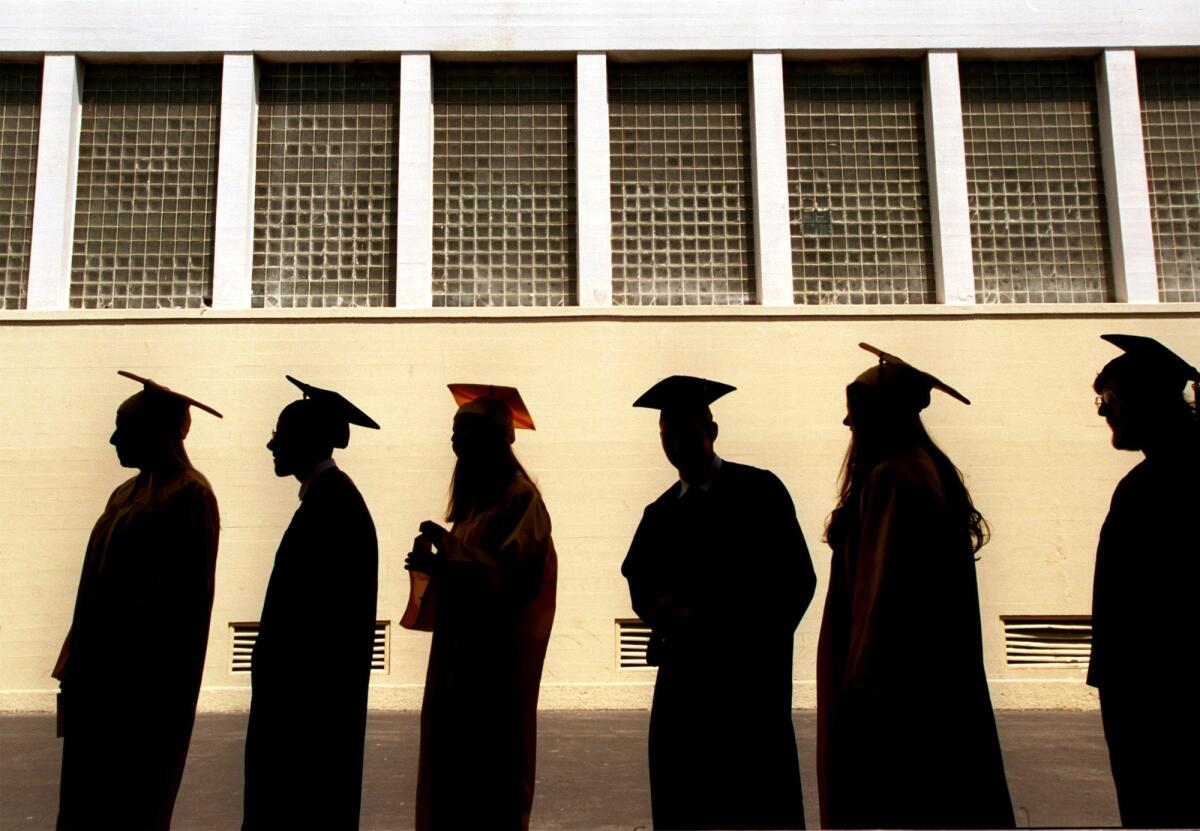Why Iowa’s graduation rate is so much higher than California’s

California’s graduation rate was 81% in 2013-14, compared with Iowa’s 90.5%.
California’s high school graduation rate has improved in the last five years, moving from 74.7% in 2010 to 81% in 2013-14. According to data released Monday, California is one of 36 states that improved their graduation rates between 2012-13 and 2013-14.
But California high schools still have a long way to go before they match Iowa, which led the country with a 90.5% graduation rate in 2013-14.
There are a few differences that explain the gap.
One reason is simple: money.
The top 10-15 states on the list, said John Rogers, education professor and director of UCLA’s Institute for Democracy, Education, and Access, spend the most on education — so it would make sense that more of their students graduate. “They tend to be states with low levels of poverty and lower levels of English learners,” Rogers said.
But that doesn’t explain everything, because California also lags behind Texas, a state with a high number of English learners which achieved an 88.3% graduation rate. And the difference in spending per pupil between Iowa and California was just over $1,100 in fiscal year 2013, according to census data.
Some states have been able to better integrate immigrant students — particularly those who move to the U.S. later in their lives — into K-12 classrooms and help them reach college, Rogers said. California schools face several barriers to helping those students as effectively as other states.
For example, California has consistently had one of the highest ratios of students to teachers, particularly at the high school level. And with crowded classrooms, students get less individualized instruction. “With smaller classrooms, there’s more opportunities to interact and use their language,” he said. “You would want to have highly trained teachers that understand how to connect the student’s home language and bridge it into instruction in English.”
California also has one of the lowest rates of high school counselors per student. In the 2012-13 school year, according to federal data, California had 826 students for each high school counselor, compared with a national average of 482. California had the second-largest ratio, smaller than only that of Arizona, which had 880 students per counselor.
Contributing factors to California’s lower graduation rate might occur at a local level, says Tyrone Howard, a UCLA professor of education. “Our biggest districts have gone through different challenges” than those in other states, he said, specifically citing the churn of high-level leaders.
And support for English language learners, Howard said, varies dramatically from one district to the next. “When you add in student mobility within the same state, you find a variability of the quality of programs,” he said.
It’s hard to know exactly what’s going on with the numbers, Howard said. “We gotta dig deep to figure out what’s at play.”
Despite the gap, Tom Torlakson, California’s state superintendent of public instruction, hailed California's upward movement in a statement. "California’s record-high graduation rates are another sign that we are making important progress toward our goal of making all students college and career ready in the 21st century,” he said.
You can reach Joy Resmovits on Twitter @Joy_Resmovits and by email at [email protected]. You can reach Sonali Kohli on Twitter @Sonali_Kohli and by email at [email protected].
Sign up for Essential California
The most important California stories and recommendations in your inbox every morning.
You may occasionally receive promotional content from the Los Angeles Times.









